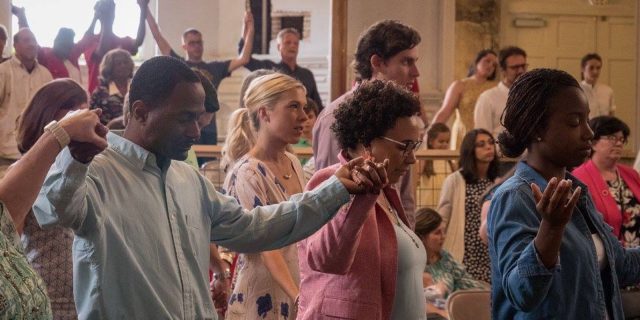How has COVID changed your life?
That’s an easy question to answer. Schools. Jobs. Shopping. Travel. Entertainment. For many, the answer includes fear, loss, anger and pain.
But the virus hasn’t just affected us as individuals, it’s also had a profound impact on our institutions. And nowhere is that as evident as in America’s churches. I realized just how much this week as I read the tenth chapter of the book of Hebrews and understood how its instructions to the church of that ancient day may have even more importance for churches in the time of COVID.
Three keys to leading churches through COVID
Three times in the chapter the writer gives specific directions regarding the things that matter most in congregational life. Each instruction begins with, “Let us…” before addressing specific priorities:
“Let us draw near [to God] with a true heart” (verse 22)
“Let us hold fast the confession of our hope” (verse 23)
“Let us stir up one another to love and good works” (verse 24)
In other words, effective churches must keep their people close to God, faithful to their convictions and connected with one another.
That’s counsel America’s churches need to hear today as we struggle with the on-going challenges of COVID. Attendance isn’t what it used to be. Volunteers are scarce. Giving isn’t at former levels. The old, familiar programs aren’t connecting as they once did. Leadership doesn’t play by the rules it used to (I blogged previously on the peculiar leadership struggles of pastors during COVID).
So today, when many churches today are asking themselves, “What do we do now?” Hebrews 10 gives three simple, clear and unequivocal answers.
“Let us draw near with a true heart in full assurance of faith.” Church is first and foremost the gathering of ordinary people who yearn for relationship with God. While the previous verses in the chapter make clear that the only way into this relationship is through the atoning death of Jesus on the cross, the truth is that churches must continually tend that relationship, like someone tending a fire. One of the gifts that COVID has given the church is to call us back to our most basic responsibility: to provide the context and resources for people to grow in their relationship with God.
“Let us hold fast the confession of our hope without wavering.” The distinctiveness of biblical faith doesn’t maintain itself by itself. We live in a world beset by all manner of spiritual and moral dangers; if churches don’t pay attention, their people will lose their way. Now is not the time for fast-food theology but for the red meat of biblical truth.
“Let us stir up one another to love and good works.” Everyone in each church is responsible to invest time and energy in the people around them. The simple fact is that we can’t make it on our own, and church exists not to give an abstract experience of worship but to fully flesh it out in human relationships. That’s why our congregations are excited with every new phase of reopening our churches is that they yearn to be around one another. To see, touch, hear, talk, worship and pray with a live person. A faith built on ZOOM may last for a season, but sooner or later it becomes as ephemeral and artificial as every other aspect of the digital culture surrounding us.
“Let us draw near with a true heart…Let us hold fast the confession of our hope…Let us stir up one another to love and good works”—three great leadership instructions to the COVID-era church that will not lead us astray.
Churches may make it through COVID…or they may not
But there’s more to the story. When we drill down into the grammar behind the commands something even more important becomes visible: each verb is in the subjunctive mood.
OK, I know I’m getting into grammar nerd mode, but hear me out.
Grammatically, the mood of a verb reveals what that verb is up to, and in English we have three moods. The “indicative” mood states facts. For instance, when I say, “I love the Georgia Bulldogs” (something I say often), I’m speaking in the indicative mood.
The “imperative” mood, on the other hand, gives orders. Me saying, “You must love the Georgia Bulldogs” would be an example (not that I’d ever do that, at least in public).
But the “subjunctive” mood is different from either the indicative or the imperative because, basically, it expresses desire. When I say, “I wish you loved the Georgia Bulldogs like I do,” for example, I’m using the subjunctive mood. In other words, the subjunctive mood doesn’t convey certainty like the other moods. It expresses something you wish would happen….but might not.
While most churches are slowly returning to normal, many will never get back to their pre-COVID levels. And some will close their doors forever.
The people in the church make all the difference
So, back to our chapter ten from Hebrews. The three “Let us’s” of the church, as good and positive as they are, don’t happen by accident but by design. You don’t stumble into them but must work for them to happen. They don’t magically appear to local churches by virtue of denominational affliliation, the notoriety of a celebrity pastor, size of buildings, dollars in the budget or scale of programs. They only happen if the people in our churches choose to make them happen.
“Let us draw near…Let us hold fast the confession of our hope without wavering…let us stir up one another to love and good works”—maybe the lasting gift of COVID to the church is to call us back to what we really should have been doing all along.
For more content like this follow my Facebook Page Mike Turner Faith and Family
